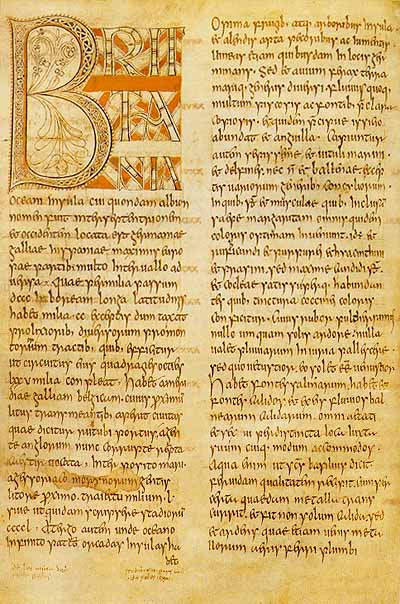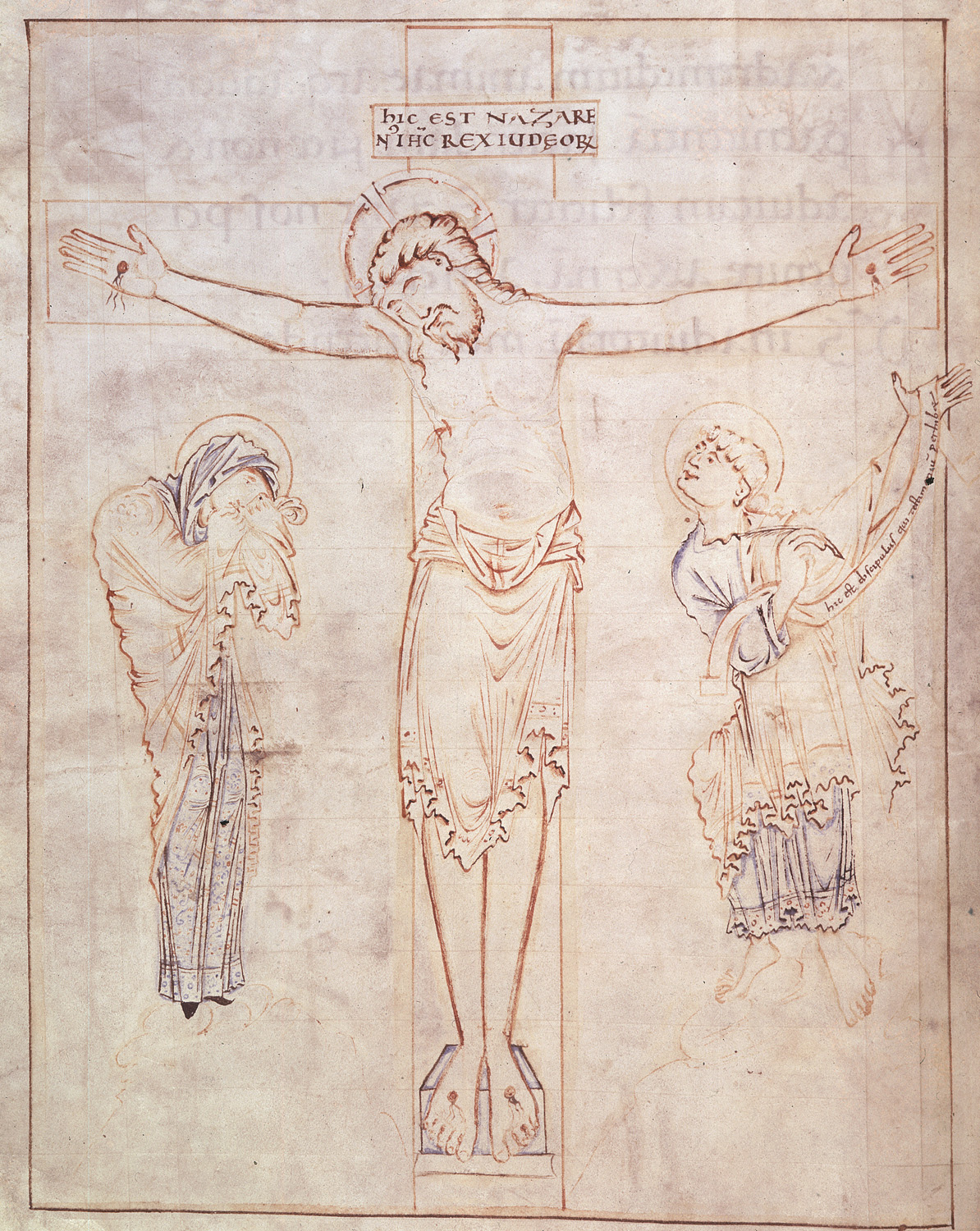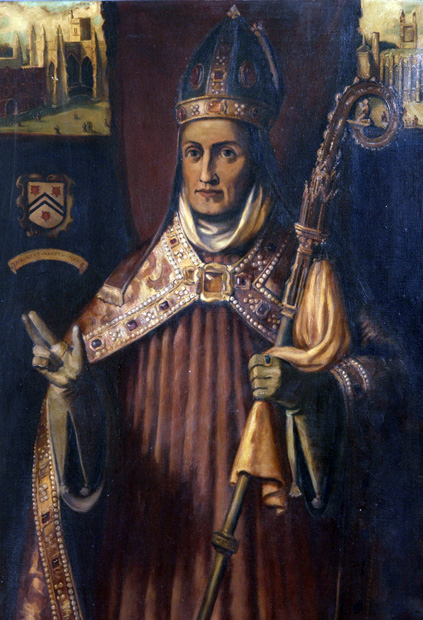|
Bishops Of Ely
The Bishop of Ely is the ordinary of the Church of England Diocese of Ely in the Province of Canterbury. The diocese roughly covers the county of Cambridgeshire (with the exception of the Soke of Peterborough), together with a section of north-west Norfolk and has its episcopal see in the City of Ely, Isle of Ely in Cambridgeshire, where the seat is located at the Cathedral Church of the Holy Trinity. The diocesan bishops resided at the Bishop's Palace, Ely until 1941; they now reside in Bishop's House, the former cathedral deanery. The roots of the Diocese of Ely are ancient and the area of Ely was part of the patrimony of Saint Etheldreda. Prior to the elevation of Ely Cathedral as the seat of the diocese, it existed as first as a convent of religious sisters and later as a monastery. It was led by first by an abbess and later by an abbot. The convent was founded in the city in 673. After St Etheldreda's death in 679 she was buried outside the church. Her remains were la ... [...More Info...] [...Related Items...] OR: [Wikipedia] [Google] [Baidu] |
Ely, Cambridgeshire
Ely ( ) is a cathedral city and civil parish in the East Cambridgeshire district, in Cambridgeshire, England, northeast of Cambridge, southeast of Peterborough and from London. At the 2021 United Kingdom census, 2021 census, the built-up area had a population of 19,200. The parish which includes the villages of Chettisham, Prickwillow, Queen Adelaide, Cambridgeshire, Queen Adelaide and Stuntney and the hamlet of Mile End had a population of 20,574 in 2021. Ely is built on a Kimmeridge Clay island which, at , is the highest land in the Fens. It was due to this topography that Ely was not waterlogged like the surrounding Fenland, and an island separated from the mainland. Major rivers including the River Witham, Witham, River Welland, Welland, River Nene, Nene and River Great Ouse, Great Ouse feed into the Fens and, until draining commenced in the eighteenth century, formed freshwater marshes and Mere (lake), meres within which peat was laid down. Once the Fens were drained, ... [...More Info...] [...Related Items...] OR: [Wikipedia] [Google] [Baidu] |
Abbot
Abbot is an ecclesiastical title given to the head of an independent monastery for men in various Western Christian traditions. The name is derived from ''abba'', the Aramaic form of the Hebrew ''ab'', and means "father". The female equivalent is abbess. Origins The title had its origin in the monasteries of Egypt and Syria, spread through the eastern Mediterranean, and soon became accepted generally in all languages as the designation of the head of a monastery. The word is derived from the Aramaic ' meaning "father" or ', meaning "my father" (it still has this meaning in contemporary Arabic: أب, Hebrew: אבא and Aramaic: ܐܒܐ) In the Septuagint, it was written as "abbas". At first it was employed as a respectful title for any monk, but it was soon restricted by canon law to certain priestly superiors. At times it was applied to various priests, e.g. at the court of the Frankish monarchy the ' ("of the palace"') and ' ("of the camp") were chaplains to the Merovingian ... [...More Info...] [...Related Items...] OR: [Wikipedia] [Google] [Baidu] |
Anna Of East Anglia
Anna (or Onna; killed 653 or 654) was List of monarchs of East Anglia, king of East Anglia from the early 640s until his death. He was a member of the Wuffingas family, the ruling dynasty of the East Angles, and one of the three sons of Eni of East Anglia, Eni who ruled the kingdom of East Anglia, succeeding some time after Ecgric of East Anglia, Ecgric was killed in battle by Penda of Mercia. Anna was praised by Bede for his devotion to Christianity and was renowned for the saintliness of his family: his son Jurmin and all his daughters – Seaxburh of Ely, Seaxburh, Æthelthryth, Æthelburh of Faremoutiers, Æthelburh and possibly a fourth, Wihtburh – were canon (priest), canonised. Little is known of Anna's life or his reign, as few records have survived from this period. In 631 he may have been at Exning, close to the Devil's Dyke, Cambridgeshire, Devil's Dyke. In 645 Cenwalh of Wessex was driven from his kingdom by Penda and, due to Anna's influence, he was conv ... [...More Info...] [...Related Items...] OR: [Wikipedia] [Google] [Baidu] |
Kingdom Of The East Angles
The Kingdom of the East Angles (; ), informally known as the Kingdom of East Anglia, was a small independent kingdom of the Angles during the Anglo-Saxon period comprising what are now the English counties of Norfolk and Suffolk and perhaps the eastern part of the Fens; the area still known as East Anglia. The kingdom formed in the 6th century in the wake of the Anglo-Saxon settlement of Britain and was one of the kingdoms of the Heptarchy. It was ruled by the Wuffingas dynasty in the 7th and 8th centuries, but the territory was taken by Offa of Mercia in 794. Mercia control lapsed briefly following the death of Offa but was reestablished. The Danish Great Heathen Army landed in East Anglia in 865; after taking York it returned to East Anglia, killing King Edmund ("the Martyr") and making it Danish land in 869. After Alfred the Great forced a treaty with the Danes, East Anglia was left as part of the Danelaw. It was taken back from Danish control by Edward the Elder ... [...More Info...] [...Related Items...] OR: [Wikipedia] [Google] [Baidu] |
Historia Ecclesiastica Gentis Anglorum
The ''Ecclesiastical History of the English People'' (), written by Bede in about AD 731, is a history of the Christian Churches in England, and of England generally; its main focus is on the growth of Christianity. It was composed in Latin, and is believed to have been completed in 731 when Bede was approximately 59 years old. It is considered one of the most important original references on Anglo-Saxon history, and according to some scholars has played a key role in the development of an English national identity. Overview The , or ''An Ecclesiastical History of the English People'', is Bede's best-known work, completed in about 731. The first of the five books begins with some geographical background and then sketches the history of England, beginning with Julius Caesar's invasion in 55 BC. A brief account of Christianity in Roman Britain, including the martyrdom of St Alban, is followed by the story of Augustine of Canterbury, Augustine's mission to England in 597, which brou ... [...More Info...] [...Related Items...] OR: [Wikipedia] [Google] [Baidu] |
Venerable Bede
Bede (; ; 672/326 May 735), also known as Saint Bede, Bede of Jarrow, the Venerable Bede, and Bede the Venerable (), was an English monk, author and scholar. He was one of the most known writers during the Early Middle Ages, and his most famous work, ''Ecclesiastical History of the English People'', gained him the title "The Father of History of England, English History". He served at the monastery of St Peter and its companion monastery of St Paul in the Kingdom of Northumbria of the Angles (tribe), Angles. Born on lands belonging to the twin monastery of Monkwearmouth–Jarrow Abbey, Monkwearmouth–Jarrow in present-day Tyne and Wear, England, Bede was sent to Monkwearmouth at the age of seven and later joined Abbot Ceolfrith at Jarrow. Both of them survived a plague that struck in 686 and killed the majority of the population there. While Bede spent most of his life in the monastery, he travelled to several abbeys and monasteries across the British Isles, even visiting t ... [...More Info...] [...Related Items...] OR: [Wikipedia] [Google] [Baidu] |
Diocese Of Lincoln
The Diocese of Lincoln forms part of the Province of Canterbury in England. The present diocese covers the ceremonial county of Lincolnshire. History The diocese traces its roots in an unbroken line to the Pre-Reformation Diocese of Leicester, founded in 679. The see of Leicester was translated to Dorchester in the late 9th century, before taking in the territory of the Diocese of Lindsey and being translated to Lincoln. The diocese was then the largest in England, extending from the River Thames to the Humber Estuary. In 1072, Remigius de Fécamp, bishop under William the Conqueror, moved the see to Lincoln, although the Bishops of Lincoln retained significant landholdings within Oxfordshire. Because of this historic link, for a long time Banbury remained a peculiar of the Bishop of Lincoln. The modern diocese remains notoriously extensive, having been reportedly referred to by Bob Hardy, Bishop of Lincoln, as "2,000 square miles of bugger all" in 2002. The dioces ... [...More Info...] [...Related Items...] OR: [Wikipedia] [Google] [Baidu] |
Foxhall, Suffolk
Foxhall is a civil parish in the East Suffolk district of Suffolk, England a few miles east of Ipswich. It is adjacent to the parishes of Kesgrave to the north, Martlesham to the northeast, Brightwell to the east, Purdis Farm to the south and the borough of Ipswich to the west. The three parishes of Brightwell, Foxhall and Purdis Farm have a common council. The 2001 population was 151 persons in 57 households according to the census, the population having increased at the 2011 Census to 200. Foxhall was recorded in the Domesday Book of 1086 as "Foxehola". The history and meaning ('fox-hole') of the name Foxhall and many other place-names in the parish are studied in a paper by Keith Briggs. The survey mentions 1 holding under Foxhall: 15 acres valued at 2 shillings held by the Abbot of Ely. Under the heading of "Derneford", "which is no doubt Darnford in Foxhall, there was 80 acres and 2 acres of meadow, 3 bordars in Saxon times having 4 plough-teams when it was valued a ... [...More Info...] [...Related Items...] OR: [Wikipedia] [Google] [Baidu] |
Domesday Book
Domesday Book ( ; the Middle English spelling of "Doomsday Book") is a manuscript record of the Great Survey of much of England and parts of Wales completed in 1086 at the behest of William the Conqueror. The manuscript was originally known by the Latin name , meaning "Book of Winchester, Hampshire, Winchester", where it was originally kept in the royal treasury. The ''Anglo-Saxon Chronicle'' states that in 1085 the king sent his agents to survey every shire in England, to list his holdings and dues owed to him. Written in Medieval Latin, it was Scribal abbreviation, highly abbreviated and included some vernacular native terms without Latin equivalents. The survey's main purpose was to record the annual value of every piece of landed property to its lord, and the resources in land, labour force, and livestock from which the value derived. The name "Domesday Book" came into use in the 12th century. Richard FitzNeal wrote in the ( 1179) that the book was so called because its de ... [...More Info...] [...Related Items...] OR: [Wikipedia] [Google] [Baidu] |
Ramsey Abbey
Ramsey Abbey was a Order of Saint Benedict, Benedictine abbey in Ramsey, Cambridgeshire, Ramsey, Huntingdonshire (now part of Cambridgeshire), England. It was founded about AD 969 and Dissolution of the Monasteries, dissolved in 1539. The site of the abbey in Ramsey is now a scheduled monument. Most of the abbey's buildings were demolished after the dissolution but surviving structures are Listed building#Categories of listed building, Grade I and Grade II* listed buildings. Ramsey Abbey Gatehouse is in the care of the National Trust for Places of Historic Interest or Natural Beauty, National Trust and the Church of St Thomas à Becket, Ramsey was one of the buildings of the abbey. The Abbey Ramsey Abbey was founded in 969 by Oswald of Worcester, Oswald, Bishop of Worcester on land donated by Æthelwine, Ealdorman of East Anglia (Earl Ailwyn), where he had already built a wooden chapel for three monks. The foundation was part of the mid-10th-century English Benedictine reform, i ... [...More Info...] [...Related Items...] OR: [Wikipedia] [Google] [Baidu] |
Peterborough Cathedral
Peterborough Cathedral, properly the Cathedral Church of St Peter, St Paul and St Andrew, and formerly known as Peterborough Abbey or St Peter's Abbey, is a cathedral in Peterborough, Cambridgeshire, in the United Kingdom. The seat of the Church of England, Anglican Bishop of Peterborough, it is dedicated to the Apostles in the New Testament, Apostles Saint Peter, Saint Paul, and Saint Andrew, whose statues look down from the three high gables of the West Front. Founded in the History of Anglo-Saxon England, Anglo-Saxon period as a Minster (church)#History, minster it became one of England's most important Benedictine abbeys, becoming a cathedral only in 1542. Its architecture is mainly Norman architecture, Norman, following a rebuilding in the 12th century. Alongside the cathedrals of Durham Cathedral, Durham and Ely Cathedral, Ely, it is one of the most important 12th-century buildings in England to have remained largely intact, despite extensions and restoration, and is one of ... [...More Info...] [...Related Items...] OR: [Wikipedia] [Google] [Baidu] |
Bishop Of Winchester
The Bishop of Winchester is the diocesan bishop of the Diocese of Winchester in the Church of England. The bishop's seat (''cathedra'') is at Winchester Cathedral in Hampshire. The Bishop of Winchester has always held ''ex officio'' the office of Prelate of the Order of the Garter, Most Noble Order of the Garter since its foundation in 1348. except during the period of the Commonwealth of England, Commonwealth until the Stuart Restoration, Restoration of the Monarchy. Bishops of Winchester also often held the positions of Lord Treasurer and Lord Chancellor ''ex officio''. During the Middle Ages, the Diocese of Winchester was one of the wealthiest English sees, and its bishops have included a number of politically prominent Englishmen, notably the 9th century Saint Swithun and medieval magnates including William of Wykeham and Henry of Blois. The Bishop of Winchester is appointed by the Crown, and is one of five Church of England bishops who sit ''ex officio'' among the 26 Lo ... [...More Info...] [...Related Items...] OR: [Wikipedia] [Google] [Baidu] |








